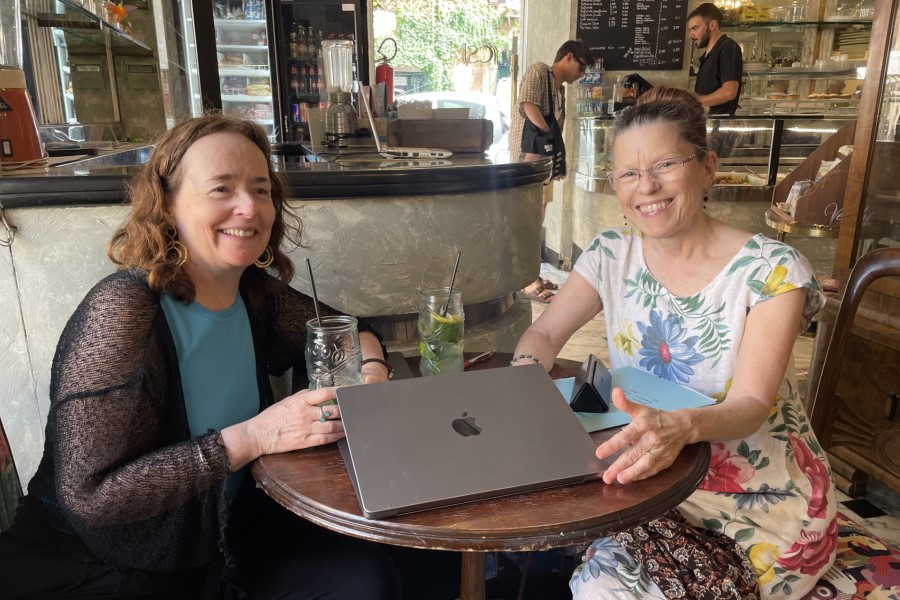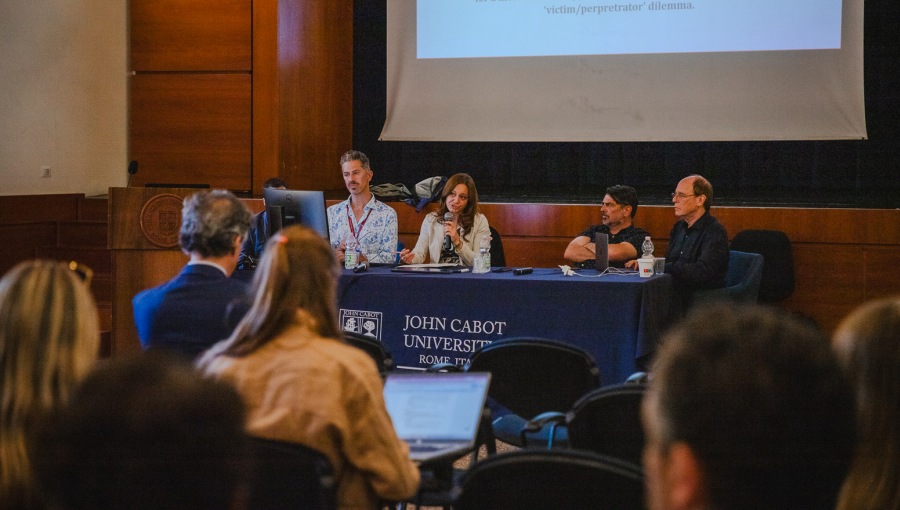Spirituality and Black Feminism in Simone Leigh’s Public Art: A New Book by Prof. Eszter Salgó

Spirituality and Black Feminism in the Public Art of Simone Leigh by Eszter Salgó
What is the function of public art: to contribute to social and urban regeneration or to offer an aesthetic experience renouncing political activism? Professor Eszter Salgó’s latest book Spiritualità e femminismo nero nell’arte pubblica di Simone Leigh, published in Italian by Postmedia Books, explores Simone Leigh’s monumental sculpture Brick House, the first artwork displayed on the Plinth of New York’s High Line. It seeks to illustrate the subversive potential that lies in Leigh’s determination to challenge the “Western model” (based on capitalism, rationalism, and positivism but also on sexism and racism) and to unveil the intrinsic contradictions of her postcolonial project.
Located on the Spur, the newest section of the High Line at 30th Street and 10th Avenue, the Plinth is dedicated to a rotating series of contemporary art commissions, which will remain on display for 18 months.
Sixteen-foot-tall, Brick House is a colossal bronze bust that references the vernacular architecture of Benin, Togo, Chad and Cameroon, Mammy’s Cupboard restaurant (Natchez, Mississippi), and the skirt that women wear in Candomblé rituals. Is it an example of provocative art? Does the Spur, or the “piazza,” as the chief curator of High Line Art Cecilia Alemani calls it, represent a democratic public space? Will New York’s Plinth succeed where London’s Fourth Plinth (at Trafalgar Square) failed, becoming a landmark where the official narrative of the nation can be challenged and rewritten? Could it be that, while launching an attack on the oracles of the West, Leigh fails to challenge the oracles of the High Line? Does the new monument emerge from below, generating collective effervescence, or is it a symbol of a new America imposed from above? Will the “New Colossus” on the High Line evoke Emma Lazarus’ sonnet about the “Mother of Exiles” and generate an “imagined community” different from the one envisaged by the Trump Administration?

Brick House, photo by Timothy Schenck
To unfold these dilemmas, the book draws on urban studies, critical theory, art history, the theory of architecture, postcolonial and gender studies, psychoanalysis, and Yoruba aesthetics, on theories about public space and radical democracy. The author emphasizes Leigh’s will to adopt an Afrocentric epistemology, deconstruct the dichotomies (body-mind, material-spiritual, nature-culture) that lie at the root of Western thinking and to bring Afro-religiosity, African vernacular architecture and an icon of black female power into the predominantly masculine and white environment of New York’s center. At the same time, Salgó also points out that Leigh betrays her postcolonial struggle when she fails to recognize the High Line as a “beautification project” (where art is instrumentalized for political purposes) and to address the social problems carefully sealed by this project of urban requalification (gentrification, the cosmetic construction of “public space”).
A member of the Department of Political Science and International Affairs at John Cabot University, Prof. Salgó’s research explores how both conscious and non-conscious emotive experiences relate to public and political life. In 2017 she published Images from Paradise: The Visual Communication of the European Union’s Federalist Utopia, a book that explores the intersection of aesthetics and politics. In Fall 2020 she will be teaching Introduction to Political Science and Western European Politics.





